For a university to truly thrive, it needs to meet the needs of students, staff, and the surrounding community. And getting it right requires authentic collaboration with all of them. Here are three projects where DesignGroup and Perkins&Will engaged with users, embraced what we learned, and delivered a more holistic approach to the design process.
By: Ben Niebauer, RA, LEED AP BD+C // Associate Principal, Education Market Leader and Jessica Figenholtz, AIA, LEED AP BD+C // Associate Principal, Higher Education Practice Leader, Perkins&Will
Campuses around the globe are crafting initiatives that improve not just built structures, but the physical, emotional, and behavioral health of the students, faculty, staff, and visitors who occupy those spaces. To truly make a difference, these holistic approaches to well-being require strategies that include social and emotional skill-building, trauma-informed teaching, and community-integrated health centers.
Here are three ways that buildings – when properly designed – can help students achieve a deeper level of engagement in their learning and build the resilience and self-awareness they need to be successful in life. And, in turn, establish the institution as a leader attuned to the needs of students, staff, and community in equal measure.
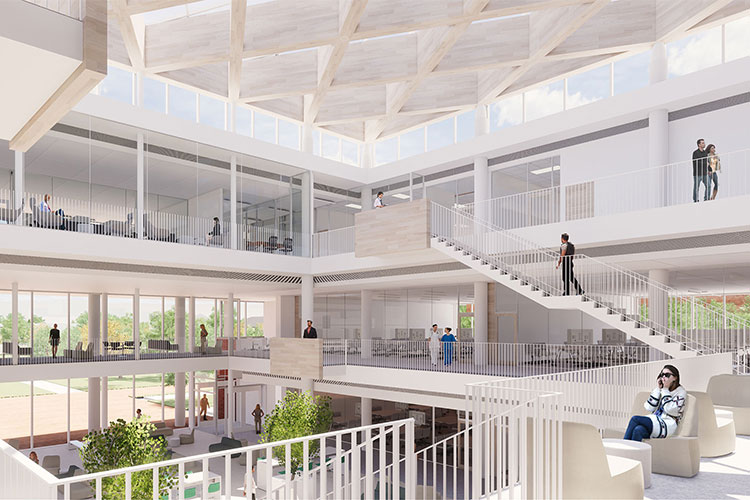
1. Integrate Well-Being into Curriculum and Design
Multiple studies – like this one from the American Medical Association – have shown that the rigors of medical education often cause students to develop unhealthy lifestyles and habits. Evidence also suggests that medical professionals who are themselves healthy are more likely to counsel their patients to embody these same practices. In short: healthier students make healthier doctors, who in turn make healthier patients.
Recognizing this, senior leadership at Ohio University’s Heritage College of Osteopathic Medicine (OU HCOM) empowered their faculty to re-tool their curriculum to serve as a foundation for the well-being of its students and faculty. This revamped curriculum established time for self-care and renewal and facilitated a self-directed method of learning to allow for pedagogical flexibility and evolving processes.
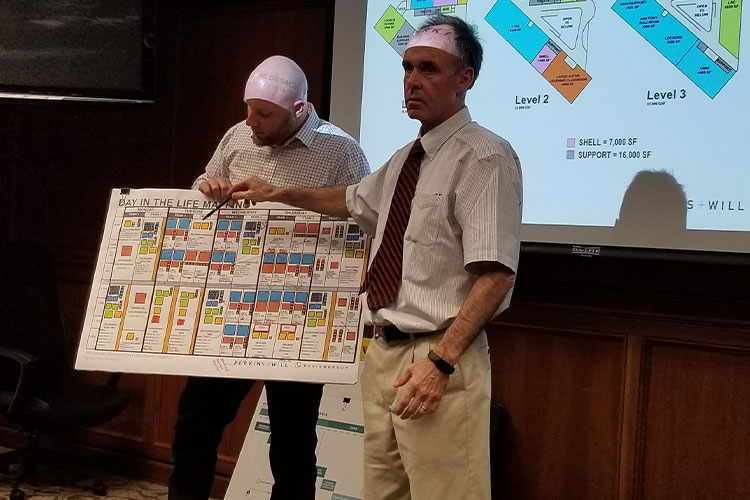
DesignGroup and the international design team of Perkins&Will collaborated with HCOM faculty to develop a mix of spaces that would nurture this new focus on emotional intelligence, well-being, and clinically-integrated teaching in a new home on OU’s campus. The new facility incorporates yoga studios, mindfulness rooms, wellness areas, and fitness centers for mental health breaks planned throughout the day. These spaces are infused with biophilic design details to better connect occupants with the natural environment through the use of direct and indirect light, including a trellis-designed skylight atrium. Students and faculty are now participants in a community of wellness, and have the spaces to embrace it beyond the classroom.
By putting well-being into practice, the school is cultivating students who are adaptable, team-based, compassionate, and empathetic – no matter which direction their careers might take them.
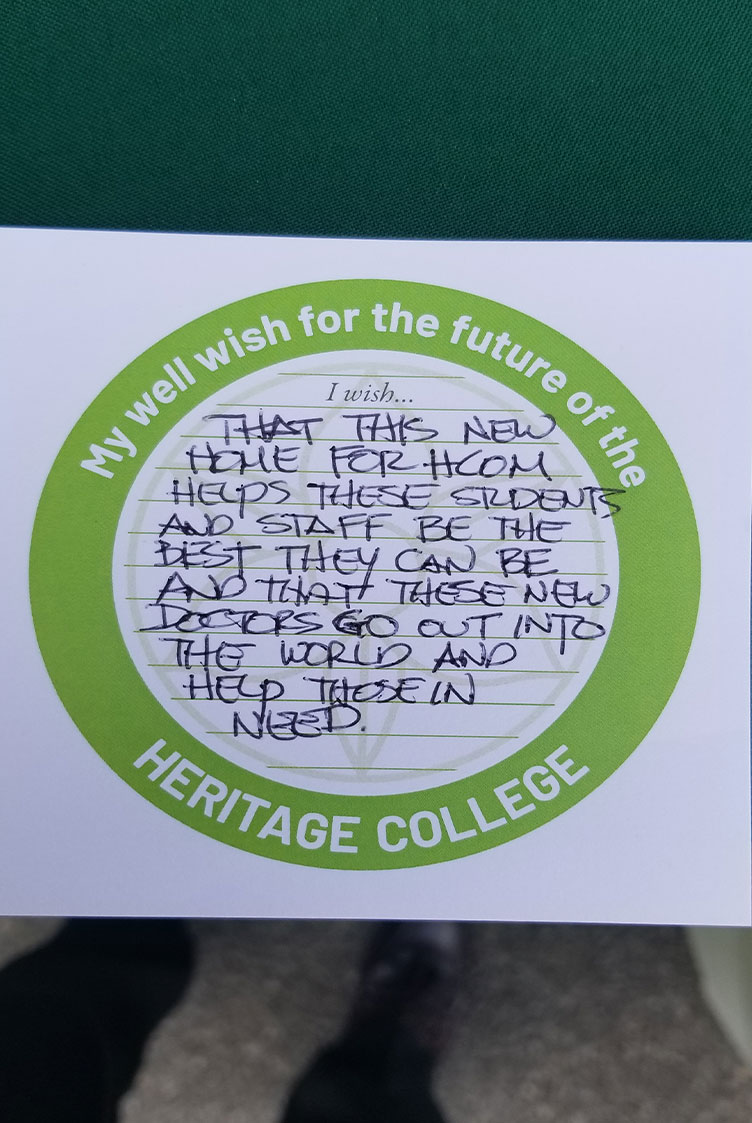
2. Partner Up
Within our current environment of changing ways of work, systems evolution, exponential technology growth, population cliffs, etc. the status quo won’t do. These and other disruptors are changing our course of action, and teams of designers need to be flexible as they approach problems — and be willing to fail, learn from what didn’t work, iterate, and try again. In his new book on business transformation, Collective Disruption, author Michael Docherty says that if companies want to be competitive, they must understand that the old definition of innovation is dead. “What used to be enough to grow a company is now just enough to stay in place,” he writes. “It isn’t about core innovation – you have to be really good at core innovation and transformative innovation.”
For community colleges, innovation often starts with partnership. And a growing trend in these partnerships targets specific workforce development. Reinvention to meet the needs of their constituents is necessary; they must possess an intimate knowledge of both their region and their students, and constantly develop ways to stay aligned with one another.
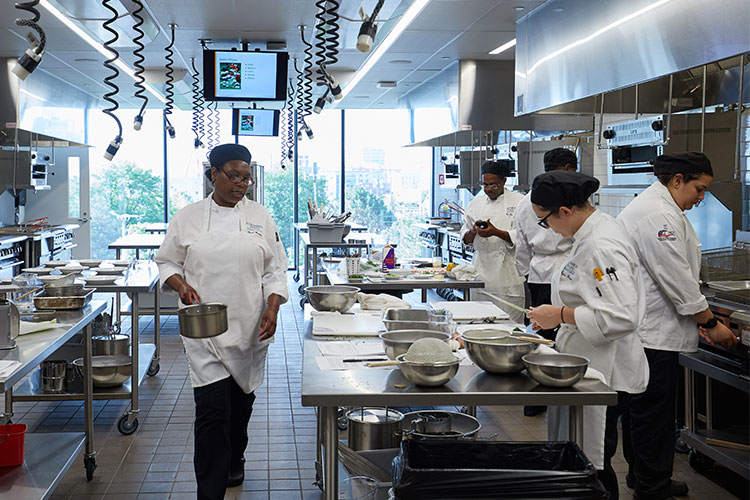
A good example of this collaboration: DesignGroup helped Columbus State Community College, in Columbus, Ohio, develop Mitchell Hall, a 80,000 square foot facility for the College’s School of Hospitality Management and Culinary Arts. With 11 distinct teaching kitchens, the facility was designed as a culinary hub — a place where businesses and organizations could partner with Columbus State to help train students for any profession related to the culinary or hospitality industry. The partnership allows Mitchell Hall to align people with much-needed jobs in the local and regional economy.
3. Engage the Community
The best colleges respond to the immediate and emerging needs of their communities based on a deep understanding of those they serve. Meaningful relationships and celebrations of cultural and ethnic diversity help establish a welcoming, supportive environment for their constituents. Students and their families populate and enliven neighborhoods and businesses, contributing to the local economic landscape. This builds a common understanding of, and passion for, student success and equalizing opportunities.

As planners and designers, we strive to tap into this passion through an inclusive engagement process. Perkins&Will recently did this with Elgin Community College (ECC) in Elgin, IL, during its comprehensive master plan. By inviting local municipalities, neighborhoods, civic organizations, local school districts, and others to be part of the master planning journey, their voices collectively contributed to supporting and advancing student growth. We met with these representatives several times — in the morning, in the evening, with multiple language options and digital opportunities — which provided a wide spectrum of input and shaped the master plan.
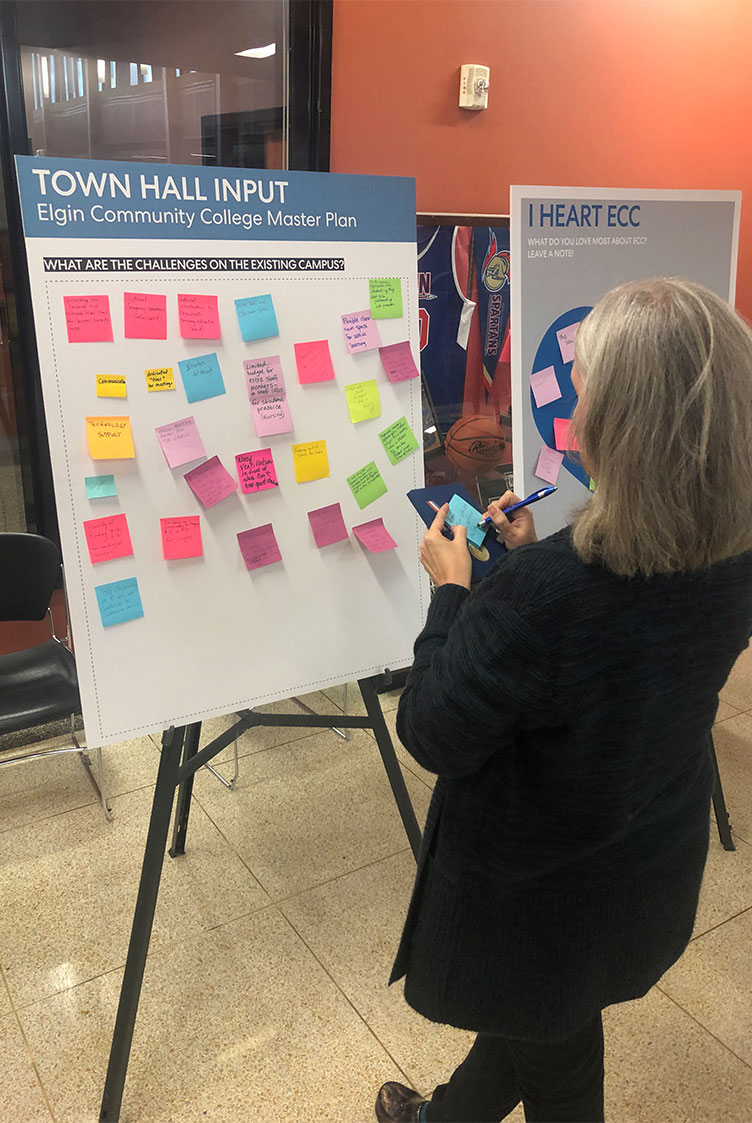
Understanding the community needs and aligning them with ECC programs, offerings, and student skills enriches the northwestern region of Illinois, and, more importantly – it gives students direct employment opportunities for a pathway forward in life.
We’ve heard it said that when community colleges succeed, so do the communities they serve and support. We agree -- and it’s true for any institution of higher learning, not just at community colleges. Great things happen, both on campus and off, when administrators and planners pursue design solutions with partnership, engagement, and well-being in mind.

Ben Niebauer, LEED AP BD + C // Associate Principal, Education Market Leader
Ben leads DesignGroup’s education practice. He has focused his 18 year career on exceptional design and planning for academic facilities. Ben has significant experience designing student centered environments including medical education facilities, laboratories, over 5,500 student housing beds, and has assessed and planned over 30 million square feet of higher education campuses. Ben is an active participant with the Society of College and University Planners.

Jessica Figenholtz, AIA, LEEP AP BD+C // Associate Principal, Higher Education Practice Leader, Perkins&Will
A respected leader in the higher education field, Jessica enhances learning experiences and outcomes across the rapidly evolving learning landscape. Her curiosity drives her to critically think through each project’s unique approach. Known for her agility in operating within multiple practice areas, Jessica is regarded for her thorough understanding of the client and project context. Involved in planning, redevelopment and sustainability, she believes design must deliver impact, create value and transform lives.
